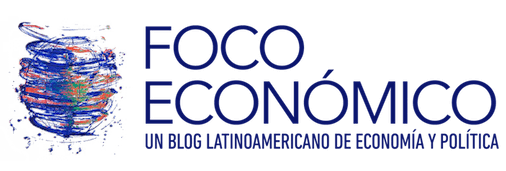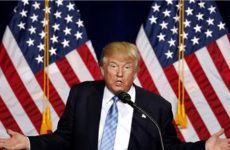When we talk about Industrial protectionism, it is common to think of underdeveloped countries and, in particular, Latin American countries during the period of import-substitution industrialization. However, there are other historical cases of interest. For example, during the second half of the 19th century, trade policy in the United States was generally quite protectionist as well as strongly unstable. Some administrations significantly increased tariffs and introduced other trade barriers, followed by administrations that repealed those measures. What is notable is that between the end of the 19th century and the beginning of the 20th century, the entire discussion about protectionism practically disappeared from the policy agenda, and the United States transformed itself into a driver of free trade. Why did protectionist pressures emerge in the United States in the second half of the 19th century? Why did protectionist positions not emerge prior to then and why were they not implemented? Why did these pressures rapidly vanish at the end of the 19th century?
Political Economy
Galiani, Schofield, and Torrens (2014) developed a political economy model that aims to respond to these questions. Those with a more thorough understanding of the literature on international trade would note that the political economy of trade policy has been a topic of interest dating to the times of Adam Smith and David Ricardo. However, more recent literature (Grossman and Helpman 1994, 1996) has focused more on explaining the different levels of protection for particular industries, whereas we are more interested in understanding the differences in trade policies between countries and their variability over time. Toward this end we bring together a simple economic model of an open economy and a probabilistic electoral model.
We model the economy based on Ricardo-Viner, that is, we have two sectors that produce tradable goods, with each one using one specific factor and another factor that can move between those sectors. For example, we can consider a manufacturing sector that utilizes capital and labor, and a rural sector that utilizes natural resources and labor. In addition, we suppose that the rural sector is less labor-intensive. Following the work of Galiani, Heyman, and Magud (2009), we also incorporate a sector that produces nontradable goods using a specific factor. For example, we can consider a services sector that uses skilled labor. This model suggests the following typology for productive structures:
Structure I: An economy abundant in specialized natural resources: This structure involves economies with a strong comparative advantage in the primary sector and without a manufacturing sector, or with a very small manufacturing sector. In these economies, trade policy is not a source of conflict. Both landowners and rural workers as well as workers in the services sector prefer free trade. It is possible that taxes on foreign trade are used as a revenue mechanism if a more efficient mechanism is not available.
Structure II: An economy abundant in diversified natural resources: This structure involves economies with a comparative advantage in the primary sector, but with a substantially developed manufacturing sector. In these economies there is a particular balance of power. Landowners, and workers in the services sector, prefer free trade, while industry and workers in the tradable sector prefer protectionism.
Structure III: An industrialized economy: This structure involves economies with a comparative advantage in industry. In these economies, there is a large majority that prefers free trade (industry, workers in the tradable sector, and workers in the services sector), with the exception of landowners, who prefer protectionism.
We model the policy using a probabilistic electoral model with heterogeneous candidates. What is interesting about this model is that there is the possibility that the candidates do not converge toward the same electoral platform. In other words, it is not always certain that both candidates end up, in equilibrium, implementing the same policy, as in the case of the renowned median voter theory. The intuition is that the candidates who are perceived by the voters as less competent may have incentives to adopt a more radical platform that is very well received by a certain group of voters with extreme views. But what really is relevant is that the economic structure affects how feasible it is for the candidates to converge or not to converge. In fact, in an economy abundant in diversified natural resources, it is more difficult for the candidates to converge than in other productive structures. The reason is that if a candidate decides to move away from the electoral center, the candidate can always find a significant group of voters ready to hear out his or her more extreme platform. For example, if the candidate proposes free trade, that position will be welcomed by landowners and services sector workers. This is less probable under the other productive structures because voters far from the political center either do not exist or are in the minority.
In our work, we incorporate two more elements in the political game. First, voters are interested not only in trade policy, but also in another dimension that we can interpret as a local public good. This is important because it often happens that policy is not one dimensional. In addition, we do not believe that trade policy has ever been the only relevant question in any election, although it has been one of the key issues in many instances. Second, we also consider the possibility of nonelectoral mechanisms influencing policy decisions. In particular, we allow that different social groups form organizations that provide financial support to the political parties during election campaigns. Once we have introduced these two elements, it continues to be certain that in Structures I and III the candidates tend to propose the same trade policy, while under Structure II the candidates tend to offer different trade policies. However, it is now perfectly possible that in Structures I and III there is no convergence and that the candidates propose different budgets. For example, one of the candidates promises more public goods for one social group and another candidate promises more public goods for another group, but both offer essentially the same trade policy. Put another way, we have a situation in which in Structures I and III the policy revolves around how to allocate the public budget, while in Structure II it is more likely to find one party with a “populist” program (protectionism and public expenditure directed toward low-income sectors) and another party with a “conservative” program (free trade and expenditure directed toward the wealthy and the middle-class).
United States
We now return to the case of the United States (see Irwin 2003, 2006a, and 2006b). Following independence, import tariffs in the United States were quite low, and their main purpose was to finance the government rather than to protect industry. Tariffs increased between 1790 and 1820, but mainly to finance the War of 1812. However, from 1820 onward the situation changed. First, an incipient industrialization process began to emerge in the United States. Second, industrialization in the United Kingdom significantly increased the demand for raw materials produced in the United States, such as cotton. Thus the North began to produce manufacturing products that competed with imports, while the South specialized in cotton exports and favored free trade. Between 1820 and 1830 the North succeeded in imposing increases in customs tariffs, but between 1830 and the Civil War, the South, supported by the West (which had begun to export grain), succeeded in getting Congress to undo those tariff increases. During the Civil War customs tariffs increased once again, with the double purpose of financing the war and protecting industry from imports. Following the Civil War, the Republicans more strong embraced protectionism that supported industry in the North, while the Democrats defended the agrarian interests of the South and West and, thus, supported the elimination of all tariffs. During this period, each time a Republican president was in the White House he tried to raise customs tariffs, while the opposite occurred whenever the president was a Democrat. These tensions reached their peak during the electoral campaign of 1896, when William McKinley (Republican) defeated William Jennings Bryan (Democrat). McKinley was known as the Napoleon of protectionism and based a large part of his electoral campaign on promoting protectionist measures.
We believe our model captures this policy equilibrium very well. In the 19th century, the United States became an economy abundant in natural resources but diversified with a significant and growing manufacturing sector that competed with British imports. In general this generated a trade policy that was more protectionist but also very unstable, since both a protectionist electoral platform (Republicans) as well as a platform supporting free trade (Democrats) had a good chance of winning elections.
The economy of the United States changed dramatically at the start of the 20th century. Between 1890 and 1913, U.S. industrial exports jumped from 20 percent to 50 percent of total exports. In other words, over about a 20-year period, there was a reversal in the country’s comparative advantage, which changed the policy equilibrium. One of the factors that helped reverse the country’s comparative advantage was the discovery of iron mines. The idea is that while transport costs at the time made it economical to export North American cotton and manufacturing products to the United Kingdom that was not the case for iron- and steel-intensive goods (Irwin 2006b). Gradually, industry and workers stopped being protectionist, and tariffs were significantly reduced. In addition, customs tariffs stopped being a key factor in polarizing the electorate or the political parties.
References
Galiani, Sebastian, Daniel Heymann, and Nicolas Magud. 2009. On the Distributive Effects of Terms of Trade Shocks: The Role of Non-Tradable Goods. Available at SSRN: http://papers.ssrn.com/sol3/papers.cfm?abstract_id=1764110.
Galiani, Sebastian, Norman Schofield, and Gustavo Torrens. 2014. Factor Endowments, Democracy and Trade Policy Divergence. Journal of Public Economic Theory 16(1): 119–56.
Grossman, Gene M., and Elhanan Helpman. 1994. Protection for Sale. American Economic Review 84: 833–50.
Grossman, Gene M., and Elhanan Helpman. 1996. Electoral Competition and Special Interest Politics. The Review of Economic Studies 63: 265–86.
Irwin, Douglas A. 2003. New Estimates of the Average Tariff of the United States, 1790-1820. Journal of Economic History 63: 506–13.
Irwin, Douglas A. 2006a. Antebellum Tariff Politics: Coalition Formation and Shifting Regional Interests. NBER Working Paper No. 12161. National Bureau of Economic Research, Cambridge, MA.
Irwin, Douglas A. 2006b. Historical Aspects of U.S. Trade Policy. NBER Reporter (Summer), National Bureau of Economic Research. Available at: http://www.nber.org/reporter/summer06/irwin.html.





















